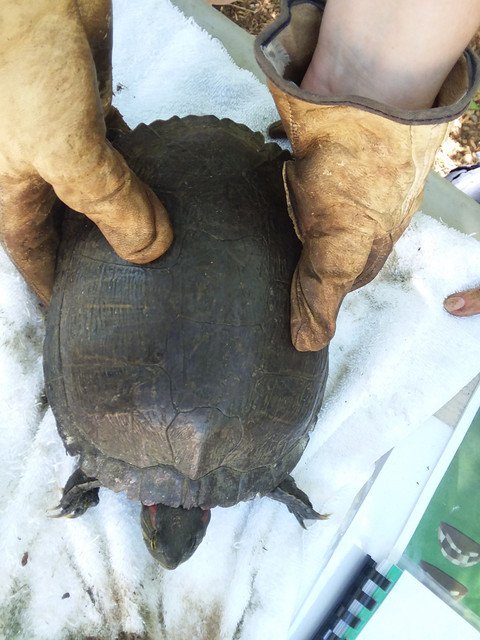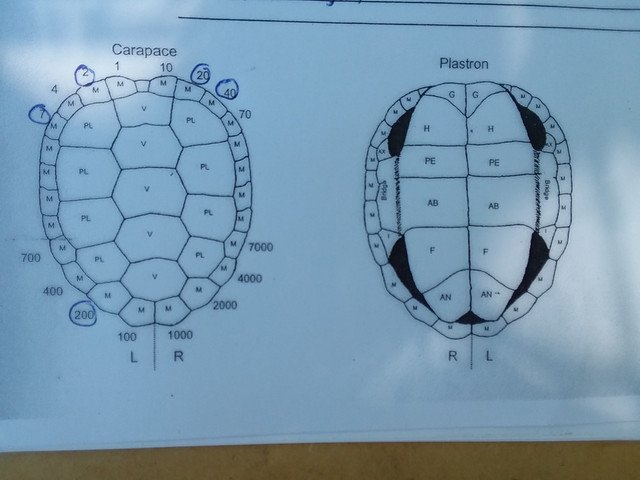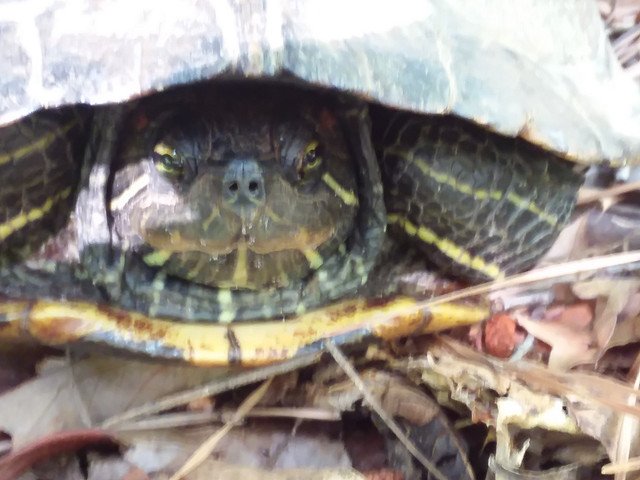
Our Turtle Census is an annual field research event held by our herpetology department as part of the museum's conservation initiative. The goal of the project is to catalog the local turtle populations around the facility, monitor their annual growth (or decline), and evaluate the health of the populations. The results are then published along with other census studies around the state of Virginia. Like my previous post about trapping snapping turtles, the turtle census is a two day exercise; day one is for setting traps (watch the video in my previous post to see that) and day two is our tag and release day.

This year was one of our most successful trapping days; when the nets were pulled in we had 36 turtles in total (not counting 3 snapping turtles, but we don't tag them in this census)! We had quite a few Red-Eared Sliders, Painted Turtles, Red Bellied Turtles, a few intergrades (which I'll get to shortly) and a single Eastern Musk Turtle. The turtles were brought up to our field station where we began sorting and processing them. If a turtle was new for us (never previously captured), it was given a number and notes were taken about its appearance. Measurements are taken of the carapace and plastron length/width and the shell height. Once the turtle is measured, it is marked with its number and released back to the area where it was trapped. Repeat captures (we had 9 that were previously marked) are measured and checked over to monitor any health changes since their last capture before being released. If any turtles had pressing injuries, we were prepared to take care of them as best we could; several turtles had fishing hooks lodged in their mouths that we were able to safely remove.

Marking turtles in a manner that lasts forever and doesn't negatively impact their health is obviously very important. Scientists used to simply carve information into turtle shells, but this process has been abandoned as we now know that turtle shells are comprised largely of bones and nerves; carving into them is likely extremely painful. Fortunately, we have a system that is cheap, easy and completely pain-free...and will last for the turtle's entire life with no adverse effects! Using a metal file, we make small notches in the outermost scutes of the shell; these marginal scutes are comprised only of keratin (the same material as our fingernails and hair) so the filing process doesn't harm the turtles in any way. As you can see by the diagram below, each scute represents a different number; to mark a turtle as #269, you would make a notch in the scutes labled "200", "40", "20", "7" and "2".



One of the big reasons we conduct this study is to monitor the spread and growth of the Red-Eared Slider population. This species is, unfortunately, incredibly common around the world; originally native to central America, this species became intensely popular in the pet trade and is now established on every continent except Antarctica. It is considered to be among the 100 most invasive species in the world (this is why we urge people not to release pets!). These turtles are incredibly destructive, out-competing our native species for resources. Even worse, they can breed with our native species to produce "intergrades", essentially hybrids, that are just as destructive as their parents. This census study allows us to monitor exactly how large the population of Red-Eared Sliders in our lake is, and how the other populations are faring in response (we did see a decline this year in the Red-bellied Turtle).

As the summer continues, we will hold 3 more census sessions before publishing our data for the state. With the success of our first session, we are confident we will see a lot of new and returning turtles this season!

Nice! I did something similar during grad school. We had Softshells as well, which are more difficult to mark. Do you mark the snappers the same way?
Snappers we do mark the same way, it's of course just WAAAYY harder and we can't risk our volunteers!
Oh man softshell marking would be difficult for sure. What sort of method would you use? Injectable tags?
Extremely interesting, I was so unaware of this.
Happy Sunday!
Wow that's a load of turtles!
Thanks for your post and for all you doing